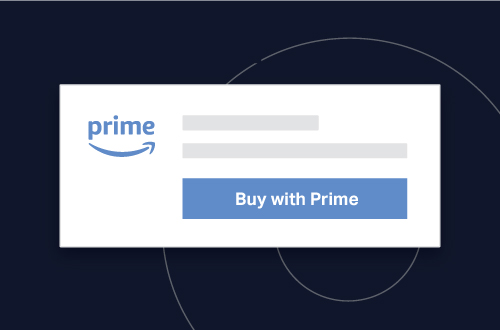The Trust Challenge
Small businesses that sell their products online and who create websites via “SaaS” (software as a service) solutions such as Shopify, BigCommerce, and others often find themselves in a struggle to communicate trust to their customers.
While the audience of this article is most likely in the ecommerce-friendly camp, the simple fact is that ecommerce is still not considered universal or even “usual” by the majority of consumers. In fact, at present, ecommerce represents just over 14% of overall retail sales in the US. And of that 14%, many if not most shoppers still gravitate towards the more familiar brands and their websites.
And what brands are behind those familiar websites you ask? Don’t be surprised. It’s the usual suspects of Amazon, Walmart, Apple, Target, and Home Depot currently topping the list. However, as more customers are using mobile phones and devices to shop, it’s clear that consumers are more ready and more willing to buy items via new or unfamiliar direct-to-consumer (DTC) sites. And as a result, virtually all e-commerce platforms are scrambling to retain and grow market share. From sporting goods to pet food, sneakers to linen sheets, the expectation of free returns and fast two-day shipping has become standard ecommerce table stakes for businesses of all shapes and sizes.
Hello Buy with Prime
 An emerging and compelling opportunity is now available to those upstart ecommerce businesses and DTC brands. This option combines the best benefits of Amazon, but without the leap of faith to go “all in” with Amazon. Of course, we’re talking about the Buy with Program which enables small and medium-sized businesses to offer those familiar and comforting Amazon Prime badges on their very own DTC website.
An emerging and compelling opportunity is now available to those upstart ecommerce businesses and DTC brands. This option combines the best benefits of Amazon, but without the leap of faith to go “all in” with Amazon. Of course, we’re talking about the Buy with Program which enables small and medium-sized businesses to offer those familiar and comforting Amazon Prime badges on their very own DTC website.
As noted earlier, communicating payment safety and product trust to consumers is a key challenge. Buy with Prime eliminates the barriers for those who might not otherwise shop with a new or unknown online business.
Buy with Prime levels the playing field and provides small businesses with an opportunity to tap into the scale and reach of Amazon Pay – Amazon’s online payments processing service that empowers customers – on external websites – to pay for their items at checkout using their own Amazon account (and without the hassle of creating a new account and registering via the “new” website).
Small business owners are also able to create and maintain long-term relationships with Amazon Prime customers (more than 200 million worldwide!) thanks to the data generated during Buy with Prime transactions. This is huge! Merchants can leverage this data via personalized email marketing tactics that effectively enable Direct to Consumer (DTC) brands to decrease budgets and dependence on less efficient digital marketing solutions such as Google and Facebook.
What are you waiting for…?
The logic is basic, Buy with Prime allows merchants a straightforward tactic to reach engaged Prime customers along with providing the tools to convert those same customers accustomed to Amazon Prime’s promise of two-day delivery and easy returns. With the additional and obvious benefits of Amazon’s logistics prowess, participants are able to take full advantage of speedy two-day (or less in some markets) delivery time.
tactic to reach engaged Prime customers along with providing the tools to convert those same customers accustomed to Amazon Prime’s promise of two-day delivery and easy returns. With the additional and obvious benefits of Amazon’s logistics prowess, participants are able to take full advantage of speedy two-day (or less in some markets) delivery time.
If you’re ready to get your product offers on your own website in front of some of the planet’s most valuable customers, we encourage you to get in touch with us today! It’s literally Primetime.



 Let’s face this head-on, for brands to truly be successful on Amazon’s marketplace (at least historically – and
Let’s face this head-on, for brands to truly be successful on Amazon’s marketplace (at least historically – and  Now that we’ve listed the headaches associated with Amazon, let’s discuss Buy with Prime. Buy with Prime seamlessly leverages Amazon’s various best-in-class platforms (payments, logistics, and marketing) to help brand owners and sellers to grow sales via their own DTC websites. DTC websites built on Shopify, BigCommerce, and WooCommerce can now quickly be updated to include product offers that leverage Buy with Prime and include the best parts of Amazon – easy payment, checkout, and returns, and speedy free delivery by utilizing Amazon’s Multi-Channel Fulfillment (MCF) but
Now that we’ve listed the headaches associated with Amazon, let’s discuss Buy with Prime. Buy with Prime seamlessly leverages Amazon’s various best-in-class platforms (payments, logistics, and marketing) to help brand owners and sellers to grow sales via their own DTC websites. DTC websites built on Shopify, BigCommerce, and WooCommerce can now quickly be updated to include product offers that leverage Buy with Prime and include the best parts of Amazon – easy payment, checkout, and returns, and speedy free delivery by utilizing Amazon’s Multi-Channel Fulfillment (MCF) but